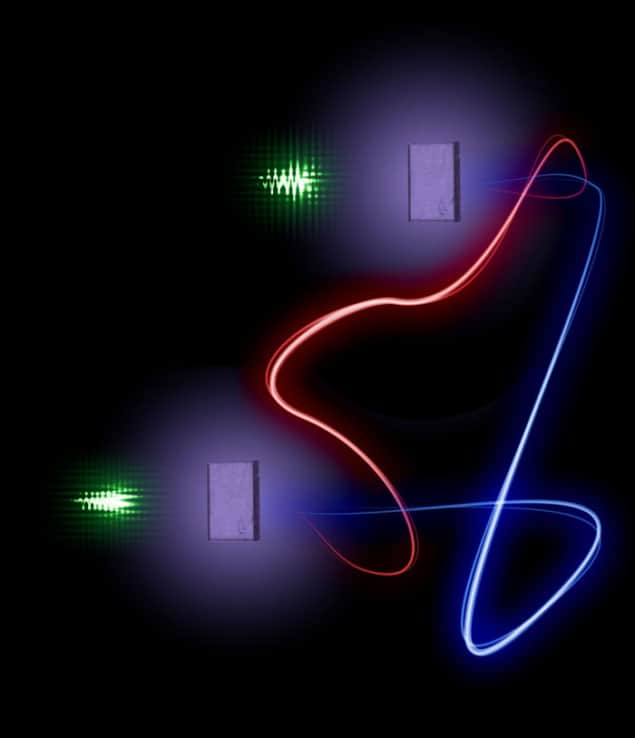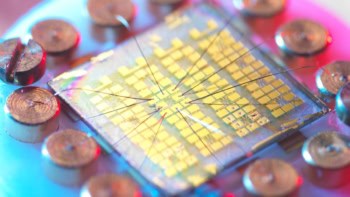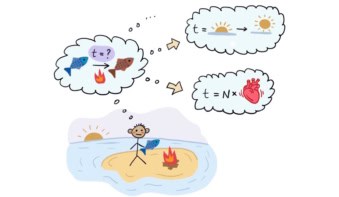
Two diamonds separated by about 15 cm have been put into a state of quantum entanglement. The experiment, carried out by physicists in the UK, was performed at room temperature and involved creating phonons (quantized vibrations) within the crystals. By showing that quantum entanglement can be achieved in two large and distant diamonds at room temperature, the research team has provided further evidence that a practical quantum computer could be within our grasp.
Quantum computers, which exploit purely quantum phenomena such as superposition and entanglement, should in principle be able to outperform classical computers at certain tasks. But building a practical quantum computer remains a challenge because the physical entities that store and transfer quantum bits (qubits) of information are easily destroyed by contact with the outside world.
Diamond is one material that shows great promise for quantum computing because it contains quantum systems that are well shielded from the environment. It has, for example, phonons that can interact with light from an external source but are in general unaffected by random thermal vibrations within the material itself.
In principle, quantum information could be stored in diamond by firing a laser pulse to create a phonon, with the information being retrieved sometime later by firing a second pulse that interacts with the phonon. Furthermore, entangled pulses of light could be used to entangle phonons in two different diamonds – something that could ultimately be useful in creating quantum computers.
Splitting photons
In the new work, Ian Walmsley and colleagues at the University of Oxford have used such a scheme to entangle two diamonds – each about 3 mm across. They begin by firing a “pump” laser pulse at a beamsplitter, which sends one half of the pulse to a diamond on the right and the other half to a diamond on the left. When an individual photon in the pulse encounters the beamsplitter, quantum mechanics dictates that it is put into a superposition of a photon that has gone left and a photon that has gone right.
When such a photon strikes a diamond, some of its energy can be absorbed to create a phonon – a high-frequency vibration of the atoms in the crystal. As phonons behave like particles that obey quantum mechanics, the diamonds are left in a superposition of the right-hand diamond having a phonon and the left-hand diamond having a phonon. In other words, the two diamonds “share” the same phonon, which is a hallmark of entanglement.
When a phonon is created, the original photon is re-emitted at a lower energy. This “red” photon is then detected in such a way that the physicists know that a phonon has been created in one of the diamonds, although which of the two is not revealed. In other words, this red photon “heralds” the entanglement of the two diamonds.
Scattered into the blue
Very shortly after the phonon is created, a second “probe” pulse is fired into the beamsplitter and the two resulting pulses arrive simultaneously at the both diamonds. If a phonon is present in one of the diamonds, one of the photons from the second pulse can absorb the phonon, thereby boosting its energy to create a “blue” photon. Because the two diamonds are entangled by a single phonon, this blue photon is in a superposition of either being emitted by the right-hand diamond or the left-hand diamond.
This superposition is confirmed by combining the blue light from both diamonds in a beamsplitter to create just one beam. This beam is then sent into a final beamsplitter, where it is again split into two beams. If a blue photon is indeed in a superposition of the left- and right-hand diamonds, it will always emerge from a specific output port of the beamsplitter. If the photon is not in a superposition, there is an equal probability that it will emerge from either port.
The team measured the output at both ports for blue photons that are heralded by a red photon – and found that the majority of the blue photons emerged from the expected port. This shows that the blue photons are indeed in a superposition as a result of the diamonds being entangled by a single phonon, according to Walmsley.
Picoseconds are enough
The entire process – from entanglement being created between the diamonds to detecting it using the probe pulse – lasts a mere 0.35 ps. Such a short timescale is needed because the phonons are only expected to survive for about 7 ps in diamond. Although such phonons could not be used to store quantum information for long periods of time, they could be used to perform very rapid quantum calculations – at least in principle.
Jeremy O’Brien of the University of Bristol in the UK calls the work “a tremendous development” that further extends the size of objects in which we can see quantum effects such as entanglement and superposition. Although practical applications of the work may not be immediately obvious, O’Brien believes it will capture physicists’ imagination of what could be possible in future quantum computers and information systems.
The research is described in Science 334 1253.



